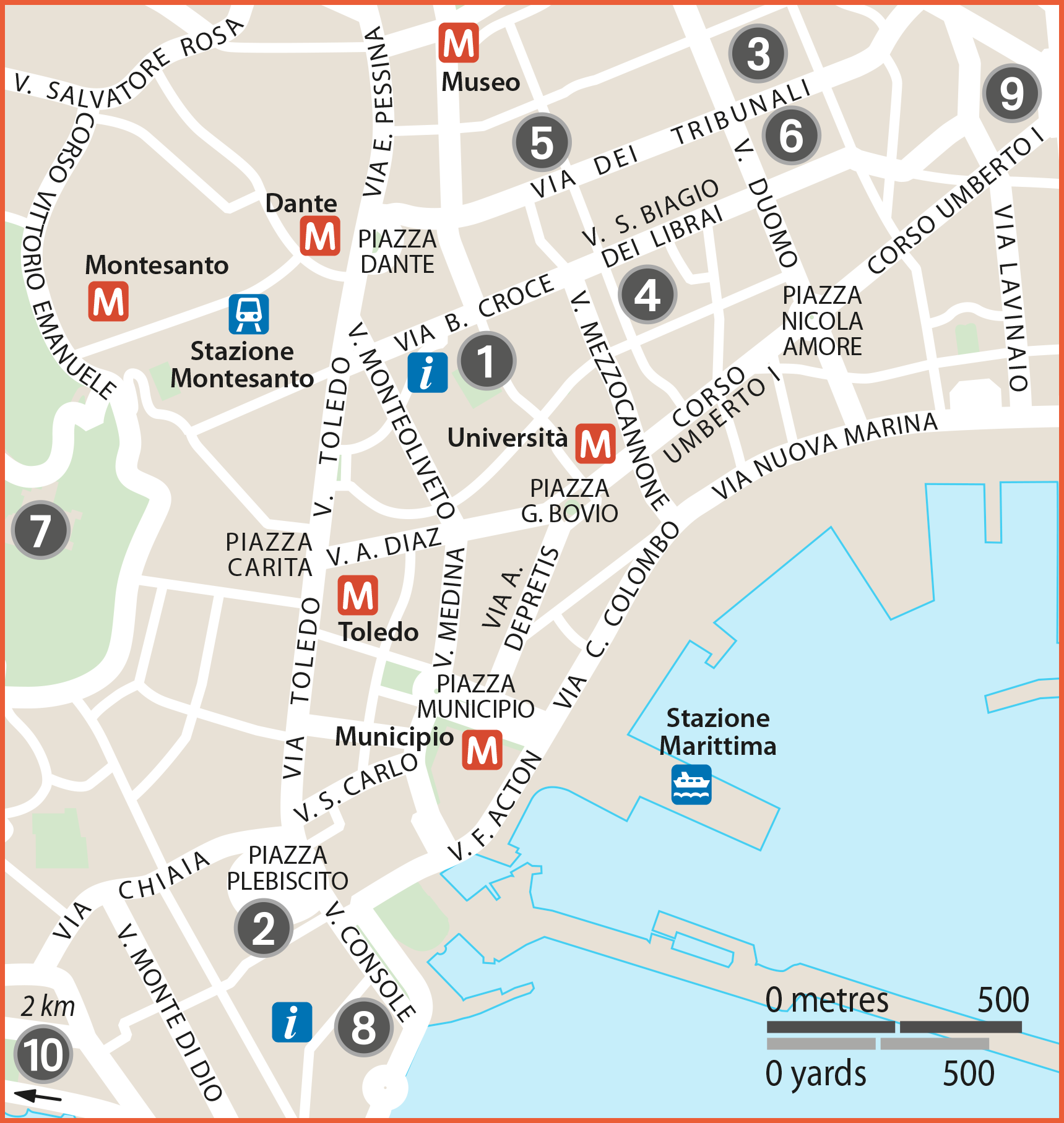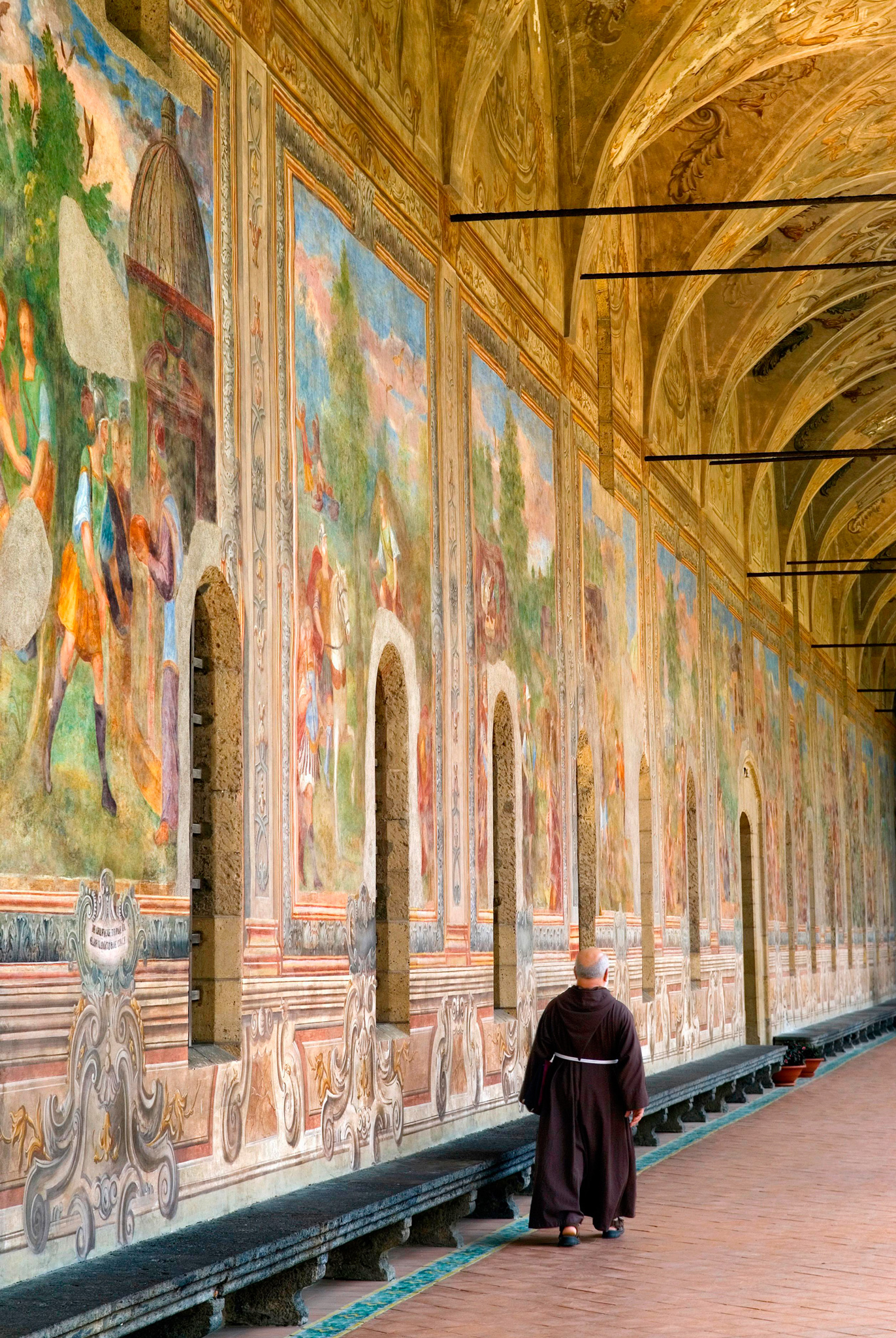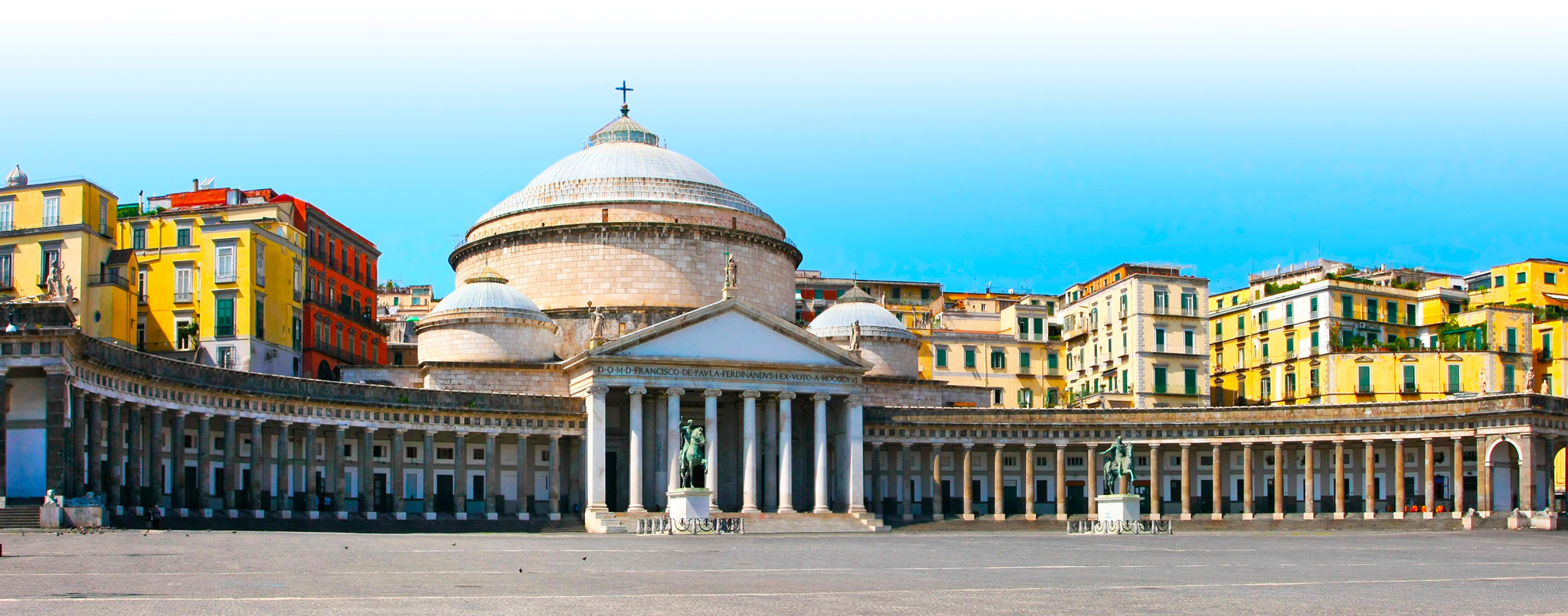CHURCHES IN NAPLES

1.Santa Chiara
The original church here was built in 1310 and, after various renovations, it has been returned to its glorious Gothic style. The most famous feature is the adjoining convent’s 18th-century majolica cloister (for further details see Santa Chiara).

Santa Chiara’s majolica cloister
2.San Francesco di Paola
A rarity in Naples, this Neo-Classical structure imitates the Pantheon, Rome’s great pagan temple to the gods built in the 2nd century AD. Inside and out the basilica is austere, with the exception of the polychrome marble Baroque altar that has many statues (for further details see San Francesco di Paola).

San Francesco di Paola, dominating Piazza del Plebiscito
3.Duomo
The oldest wing of Naples’ cathedral is the city’s most ancient surviving building, a Paleo-Christian church dating from the 4th century. The cathedral also has the oldest baptistry in the western world, with glorious mosaics. Archaeological excavations here have revealed structures reaching as far back as the ancient Greeks (for further details see Duomo, Naples).
4.Monte di Pietà
 Via S Biagio 114 • Open 9am–7pm Sat (to 2pm Sun)
Via S Biagio 114 • Open 9am–7pm Sat (to 2pm Sun) This majestic building and its adjoining church were built in the late 1500s as a charitable institute set up to grant loans to the needy. In return, the noblemen who provided this service were granted eternal salvation. Decorated mostly in late-Renaissance style, inside there are sculptures by Pietro Bernini and frescoes by Corenzio.
5.Santa Maria Maggiore
 Via dei Tribunali • Open 9am–1pm Mon–Sat (adjacent chapel only)
Via dei Tribunali • Open 9am–1pm Mon–Sat (adjacent chapel only) Nicknamed Pietrasanta (holy stone) after its ancient stone marked with a cross, thought to grant indulgences to whoever kissed it, the original church here was built in the 10th and 11th centuries and the bell tower is Naples’ only example of early medieval architecture. The present church, however, is Baroque.
6.Pio Monte della Misericordia
 Via dei Tribunali 253 • 081 44 69 44/73 • Open 9am–2pm Thu–Tue
Via dei Tribunali 253 • 081 44 69 44/73 • Open 9am–2pm Thu–Tue This charitable institution was founded in 1601, inspired by Counter-Reformation precepts which gave weight to such works as a way of ensuring salvation. The church is set back from the street by a five-arch loggia, where pilgrims could find shelter. The altarpiece, The Seven Acts of Mercy by Caravaggio, is an allegory of charitable deeds. Upstairs is an art collection.
7.Certosa di San Martino
This sparkling white monastery complex commands the most perfect location in the entire city, attesting to the wealth and power the monks once enjoyed. In the 17th and 18th centuries they commissioned the greatest artists of the day to embellish their church and chambers in Baroque style – the church, in particular, is a flamboyant catalogue of colour and pattern, sporting at least one work by each and every famous hand of the age (for further details see Certosa di San Martino).

Ceiling fresco, Certosa di San Martino
8.Santa Lucia
 Via Sta Lucia 3 • 081 764 09 43 • Open 8am–noon, 5–7:30pm daily
Via Sta Lucia 3 • 081 764 09 43 • Open 8am–noon, 5–7:30pm daily According to legend, a church stood here in ancient times, but experts date the earliest structure to the 9th century. Destroyed and rebuilt many times, the present church is postwar. The artworks were destroyed during World War II, save an 18th-century statue of St Lucy and two paintings.
9.San Pietro ad Aram
 Corso Umberto I 192 • Open 8am-noon, 4–6:30pm Mon–Fri; 8am–noon Sun
Corso Umberto I 192 • Open 8am-noon, 4–6:30pm Mon–Fri; 8am–noon Sun Tradition holds that St Peter celebrated his first mass in Naples here. The church is 12th-century, but an early Christian church and catacombs were unearthed in 1930.
10.Santa Maria del Parto
 Via Mergellina 21 • Open 4:30–8pm daily
Via Mergellina 21 • Open 4:30–8pm daily The Neapolitan poet (and humanist) Jacopo Sannazaro, ordered this church to be built in the 16th century and his tomb behind the high altar is notable for its lack of Christian symbolism. In a side chapel the painting of the Archangel Michael searing the “Mergellina Devil” records the spiritual victory of a bishop when a woman proclaimed her love for him.


